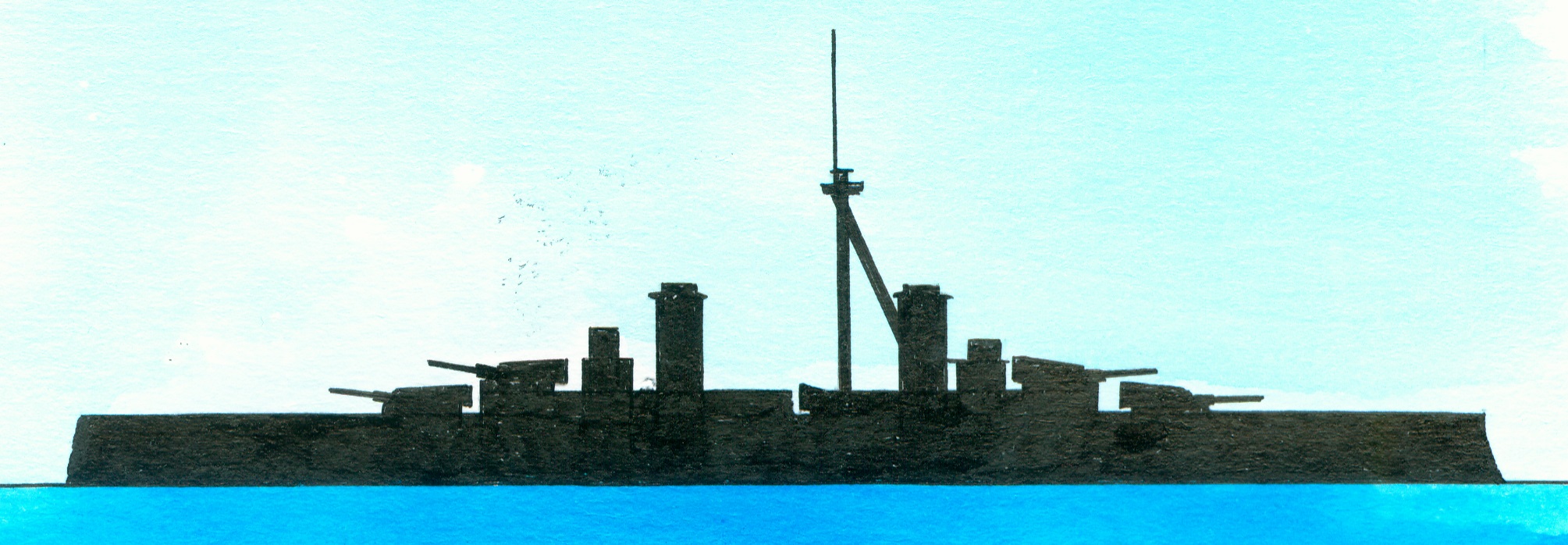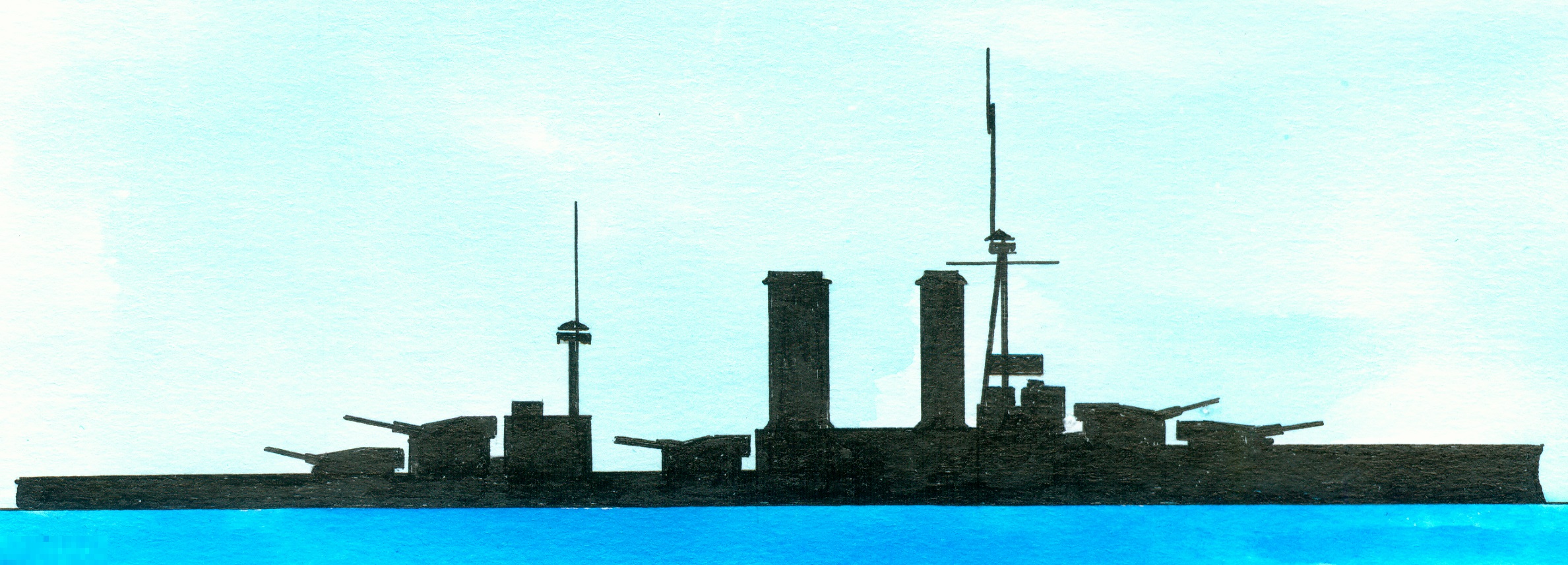Brazilian Minas Geraes-class
British Swiftsure-class
Argentinean Rivadavia-class
Chilean Almirante Latorre
Building ordered in 1906, laid down at Armstrong Whitworth, Newcastle-on-Tyne, England with yard number 791 on 17 April 1907, launched on 10 September 1908, completed on 5 January 1910, modernized 22 August 1920-4 October 1921 at New York, modernized at the Rio de Janeiro Naval Yard between June 1931-April 1938, modernized 1939-1943, during the Second World War serving as floating battery in the harbour of Salvador, decommissioned on 16 May 1952, stricken on 31 December 1952, sold to SA Cantiete Navale de Santa Maria, departed on 1 March 1954 to her final fate arriving on 22 April 1954 at Genoa, Italy where she was the same year broken up. Building costs 8.863.842 pond sterling.
Technical specifications of her class. Displacement 19.105 (standard)-21.370 (full load) tons and as dimensions 150 (between perpendiculars)-166 (over all) x 25 x 7,53 (normal)-8,31 (full load) metres rt 500-543 x 83 x 24.875-27.3 feet. The 2 shaft reciprocating vertical triple expansion steam engines and 18 Babcock&Wilcox boilers (after 1938 6 John I. Thornycroft&Co. boilers) supplied 23.500 (shp, design)-23.400 (ihp design)-27.500 (ihp actual) allowing a speed of 21,5 knots. With a speed of 10 knots was her range 10.000 nautical miles. The armour consisted of a 7,6cm/3”-22,9cm/9” (upper deck), a 3,8cm/1.5” thick upper deck, a 5,1cm/2” thick main deck with the gun turrets, barbettes and conning tower protected by respectively 5,1cm/2”-7,6cm/3” roofs)-20cm/8” (sides)-30cm/12” (face), 23cm/9” and 5,1cm/2” (sides-roof)-30cm/12”. The original armament consisted of 6x2-30,48cm/12” guns, 22-12cm/4.7” guns and 8-3pd guns. During her modernisation in 1918-1920 were 10-12cm guns removed and replaced by some modern anti aircraft guns2-7,6cm/3” 50 cal guns and 3,7cm guns. In the 1931-1938 modernisation 2-12cm/4.7” and 6-2cm/0.79 Madsen guns. The elevation of the 12cm guns was improved with 5 degrees to 18 degrees.
Notes
1. The Rivadavia-class battleships consisting of the Rivadavia and Moreno, designed by Fore River Shipbuilding Company, Quincy Point, USA, laid down in 1910
Displacement 27.900 (standard)-30.600 (full load) tons and as dimensions 178 (between perpendicular)-181,28 (over all) x 29,985 x 8,446 metres or 585-594.9 x 98,4½ x 27.8½ feet. Original armament 12-30,5cm/12” guns, 12-15,2cm/6” guns, 16-10,2c,/4” guns and 2-53,3cm/21” torpedo tubes.
2. The Almirante Latorre-class consisted of the Almirante Latorre and the Almirante Cochrane. Built in England were both ships taken over by the Royal British Navy, the Almirante Cochrane converted into the aircraft carrier HMS Eagle, the Almirante Latorre commissioned as the battleship HMS Canadaand sold back to Chile in 1920.
3. Launched at Armstrong Whitworth, Newcastle on Tyne, England and destroyed by German destroyers in Narvik Harbour, Norway on 9 April 1940. Displacement 4.233 (standard) tons, dimensions 94,60 x 15,70 x 5,40 metres or 310.37 x 51.5 x 17.72 feet and a main armament of 2-21cm/8.26” guns.
4. Displacement 12.370 (normal)-14.060 (deep load) tons and as dimensions 144,9 (over all) x 21,7 x 8,3 (deep) metres or 475.3 x 71.1 x 27.4 feet and a main armament of 2x2-25,4cm/10” breech loading guns.
5. Josiah Richard Perrett (5 February 1848 Plymouth, England-1918), chief naval architect of Armstrong Whitworth, Elswick yard.






